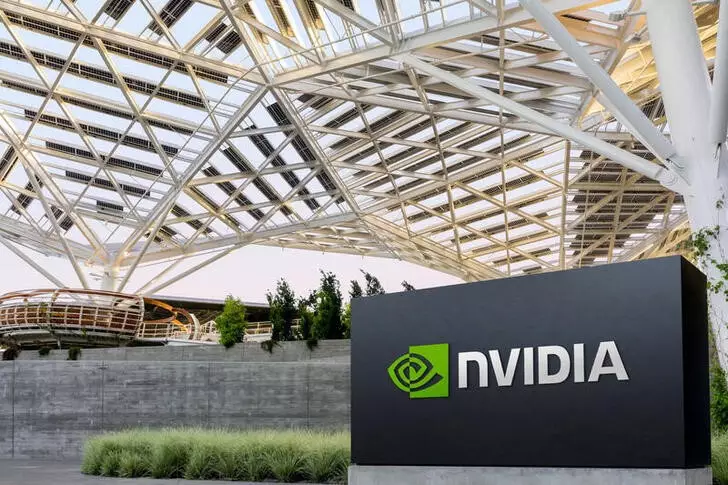In a stark illustration of the ongoing technological and trade tensions between China and the United States, the Chinese government has initiated an investigation into Nvidia, a leading player in the semiconductor industry. This move raises questions regarding international trade practices and could be interpreted as a response to increasing restrictions imposed by Washington on China’s chip sector. A closer examination of the implications, context, and potential outcomes of this investigation reveals a multifaceted situation that underscores the complexities of global technology competition.
The State Administration for Market Regulation of China stated that Nvidia is under scrutiny for possible breaches of the country’s anti-monopoly regulations. While the announcement offered little detail about the specific allegations, this investigation seems to stem not only from general competition concerns but also from potential violations related to Nvidia’s acquisition of Mellanox Technologies. This aligns with China’s growing emphasis on ensuring that foreign companies comply with local laws while also maintaining a robust market environment for domestic players.
Nvidia’s historical dominance in AI and gaming chips makes this investigation particularly noteworthy. Traditionally, the company has boasted over 90% market share in China’s AI chip market. However, with recent U.S. sanctions limiting access to advanced AI hardware, Nvidia’s once-indispensable role is now challenged by an emerging wave of local competitors, such as Huawei. The irony is palpable—Chinese companies, once reliant on American technology, are now advancing rapidly in capabilities that could diversify the competitive landscape.
Many analysts view this investigation as a retaliatory maneuver by China, triggered by the recent U.S crackdown on its semiconductor industry. This latest round of sanctions includes restrictions on exports to nearly 140 technology firms, marking an escalation in the tit-for-tat strategies employed by both nations. As the U.S. places increasing barriers on the export of advanced chips, China is responding by reinforcing its domestic market while scrutinizing foreign corporations that have led the sector.
The Chinese government’s coordinated statement from four major industry associations called for local industries to reconsider their reliance on U.S. chip suppliers. They argued that purchasing American chips has become inherently risky, urging a pivot toward domestic alternatives. This stance reflects a broader national policy aimed at reducing dependence on foreign technology, particularly amid escalating geopolitical tensions.
Despite the gravity of the situation, experts like Bob O’Donnell, chief analyst at TECHnalysis Research, suggest that the direct impact on Nvidia might be limited in the short term. Most of Nvidia’s cutting-edge chips are already barred from being sold in China due to prior regulatory constraints. Thus, while the investigation signals a growing scrutiny of foreign firms, it may also be viewed as a political maneuver that won’t materially affect Nvidia’s immediate operations.
Nonetheless, the uncertainty surrounding this investigation could shake investor confidence and lead to shifts in market dynamics. As Nvidia navigates the dual pressures of regulatory scrutiny and intense competition from emerging local players, other semiconductor companies will likely be watching closely. The scrutiny may set a precedent for how foreign technology firms engage with the Chinese market going forward.
Historical Precedents
The current investigation into Nvidia is not without precedent. In 2013, Qualcomm faced similar scrutiny from Chinese authorities, leading to a significant fine for overcharging and abusing market dominance. The outcome was a costly lesson for Qualcomm that heightened scrutiny could translate into financial penalties or operational restrictions. This history serves as a cautionary tale for Nvidia as it attempts to balance compliance with aggressive competition from domestic alternatives.
Moreover, the context hints at a broader trend where international corporations operating in China must be increasingly vigilant regarding local regulations. As China grows more assertive in enforcing its anti-monopoly laws, foreign companies can expect to encounter more strategic hurdles. The dynamic is particularly crucial for industries like semiconductors that are fundamental to national security and economic competitiveness.
Nvidia’s predicament is representative of the larger narrative of U.S.-China relations, shaped by a fierce contest for technological prowess. As both nations impose regulatory frameworks that favor domestic industry, foreign firms must navigate a treacherous landscape where compliance is essential, but not sufficient. With the Chinese government’s investigation looming, Nvidia’s strategic choices regarding its operations in China could dictate not just its success but also serve as a bellwether for how international companies engage with one of the world’s largest markets in the face of rising geopolitical tensions. As we watch this situation unfold, the implications for corporate strategy and international relations become increasingly profound.

